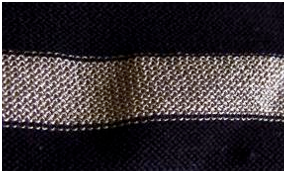




Did you find this useful? Give us your feedback










169 citations
...[15] showed that PDFs of ECG signals can be assumed to be super-Gaussian with high kurtosis values in the range of , considerably exceeding the values of noise and artifacts....
[...]
90 citations
...The wiring necessary to connect the electrodes to the measurement instrumentation is integrated into clothing and thus the ECG can be transmitted using wireless communication [3-7] or data logging on a small device [8]....
[...]
87 citations
...[4] integrated woven stainless steel electrodes in a baby suit for continuous ECG monitoring for prevention of sudden infant death syndrome....
[...]
...The wiring necessary to connect the electrodes to the measurement instrumentation is integrated into clothing and thus the ECG can be transmitted using wireless communication [3-7] or data logging on a small device [8]....
[...]
49 citations
...The wiring necessary to connect the electrodes to the measurement instrumentation is integrated into clothing and thus the ECG can be transmitted using wireless communication [3-7] or data logging on a small device [8]....
[...]
37 citations
...We employed Principal Component Analysis (PCA) and Independent Component Analysis (ICA) in time and frequency domain using FastICA and Temporal Decorrelation Source Separation (TDSEP), respectively....
[...]
...Methods like Principal Component Analysis (PCA) [9] and Independent component analysis (ICA) [10-12] are based on multivariate statistics and have been successfully utilized in several signal processing applications on cardiological recordings....
[...]
...Figure 5b depicts the ICA result using the TDSEP algorithm in the time domain....
[...]
...The methods using ICA enhance recordings acquired with textile electrodes for all test conditions with respect to the raw ECG signal....
[...]
...The number of iterations for the FastICA algorithm was limited to 200....
[...]